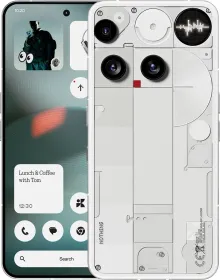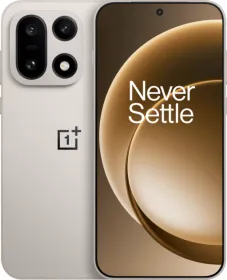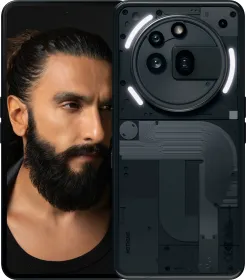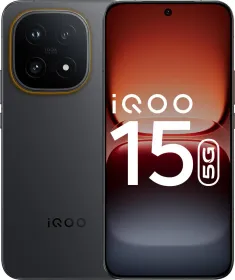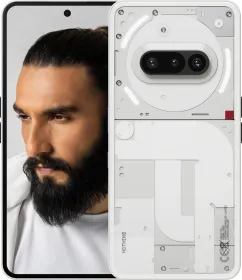Nothing returned to roots – London this week with something to prove. At its 2025 showcase, the company unveiled its boldest flagship yet – the Nothing Phone (3). Alongside it, it also introduced its first pair of over-ear headphones, Nothing Headphones (1). Both clearly follow the brand’s signature bold and aesthetic philosophy, as both devices are truly one-of-a-kind in terms of their designs. My colleague Mehtab has already shared his thoughts on the Nothing Headphone (1) in his review, and now it is time to tell you about the Nothing Phone (3).
I spent about a week with the Phone (3) since its launch, and my thoughts are clear: this is a company doubling down on design and daring, not dialing things back. From the new Glyph Matrix system to Essential Space and an improved imaging setup, Nothing isn’t just iterating — it’s evolving.
At ₹79,999, the Phone (3) enters serious flagship territory, and aims to lock horns with direct competition from devices like the Samsung Galaxy S25 and iPhone 16. The big question now: can the Nothing Phone (3) deliver where it matters most — everyday usability, camera performance, and ecosystem support? Based on my early time with the device, here are my thoughts about Carl Pei’s first flagship phone – Nothing Phone (3).
Nothing Phone (3) Price & Availability
The Nothing Phone (3) is price in India starts at ₹79,999 for the 12 GB RAM + 256 GB storage variant and ₹89,999 for the 12 GB RAM + 512 GB. There’s ₹5,000 instant discount on offer. Nothing is also bundling Nothing Headphone (1) worth ₹19,999 for free to those who pre-ordered the phone in India.
In the US, the Nothing Phone (3) is priced at $799 for 12GB + 256GB variant and $899 for 16GB + 512GB. Interestingly, Nothing is offering the higher specced version for $799 via pre-order bundle (free storage upgrade + optional Earbuds).
Pros
- Distinctive Design
- Fun Glyph Matfix
- Clean, Fast Software
- Good Everyday Performance
- Good Audio and Haptics
- Excellent Battery Life
Cons
- Premium Pricing in India
- Cameras Still Have Room to Grow
- No LTPO Display
- No Qi2 or MagSafe Equivalent
- No mmWave 5G in the U.S.
- Not a true flagship hardware
Nothing Phone (3) Review: Design and Build
The Nothing Phone (3) grabs your attention — whether you love it or hate it — making it difficult to ignore. That fits squarely within Carl Pei’s strategic vision for the brand: to stand out in a world of same-looking slabs.
Like the Nothing Phone (1) and Phone (2), it carries forward the brand’s signature transparent aesthetic, but this time it feels more structured, intentional, and confident.

Instead of the familiar symmetrical layout, the Nothing design team went with an asymmetrical and chaotic camera arrangement on the back. This design choice has sparked plenty of debate across social media and forums — some find it unappealing at first glance, while others consider it interesting and bold.
I had my doubts too. But in person and over time, it grew on me. What initially looked like a design compromise now feels like a deliberate statement: one that says, “We’re not here to blend in.”

But the real story is the Phone (3)’s new circular Glyph Matrix. It replaces segmented LED strips with a denser, more dynamic grid of 489 individual LEDs, capable of showing everything from caller ID to selfie countdowns.
This time, it feels less like a gimmick. There’s real utility here: the interface supports contact-based animations, battery indicators, recording cues, and even stopwatch timers — all without lighting up the main screen.



Nothing claims that 80% of users already engage with Glyph features, and by opening the SDK to third-party developers, it’s clearly aiming to build something more enduring — a sort of ambient interface that lives on the back of your phone.
Whether playful Glyph Toy features like Magic 8 Ball or Rock, Paper, Scissors will have long-term appeal is debatable, but for now, Nothing seems committed to transforming a visual novelty into something practical and thoughtful. We use a button at the back to activate the Glyph Matrix and switch between different Glyph Toys. This button, however, is a capacitive button.
A subtle but clever addition: a red square LED on the back that blinks when recording video or audio. It’s a smart, privacy-forward cue that shows user awareness and design intentionality.

Just like on the recently reviewed Nothing Phone 3a Pro, the Phone (3) includes the Essential Key, placed beneath the power button on the right. It ties into a new software-hardware layer called Essential Space (more on that later).
Also new is the Glyph Button, subtly tucked into the back panel. It’s a physical, clicky control that cycles through Glyph Matrix widgets, including tools like caller ID previews and interactive mini-games. And yes, it works reliably.
From a design standpoint, the Phone (3) features 1.87mm uniform bezels on all sides, an 18% reduction from the Phone (2), achieving a striking 92.89% screen-to-body ratio.


Ports are where Nothing cuts some corners. The Phone (3) ships with a USB-C 2.0 port, which limits data transfer speeds. Other button and port placements remain identical to the Nothing Phone 3a.

Despite the polarizing design, the Phone (3) feels fantastic in-hand. The flat aluminum frame, paired with Gorilla Glass Victus on the and back and 7i on the front, lends it a solid and premium build. An IP68 rating (a first for Nothing) ensures resistance to dust and water, adding much-needed durability and peace of mind.
The buttons, made from 100% recycled aluminum, offer great tactile feedback. According to Nothing, they’ve been tested to withstand 25,000 press cycles, signaling that attention to long-term durability wasn’t overlooked.
Nothing Phone (3) Review: Display
The Nothing Phone (3) features a 6.67-inch LTPS AMOLED display that impresses both on paper and in real-world use. With a 1.5K resolution (1260 x 2800 pixels) and a pixel density of 460 PPI, text and images appear sharp and crisp, with no noticeable pixelation.

During a long-haul flight back from London, I used the phone extensively to read, stream movies, and catch up on shows to test it in differnt lighting conditions. The screen delivered vibrant colors, deep blacks, and a silky-smooth 120Hz refresh rate, making for an immersive and comfortable viewing experience over extended periods.
Peak brightness hits a remarkable 4,500 nits in HDR scenarios, while its 1,600 nits full-screen brightness ensures superb legibility under direct sunlight — an important metric for outdoor usability. It also boasts a 1,000Hz touch sampling rate, lending the UI a snappy, ultra-responsive feel that should appeal to mobile gamers and those who value precision input.
The display supports HDR10+ and 10-bit color, covering over a billion shades, although it lacks Dolby Vision — a notable omission in this tier, but one that’s unlikely to affect most users’ content experience.
To address eye strain, especially in low-light environments, Nothing has implemented 2,160Hz PWM dimming, a thoughtful inclusion for eye comfort. The Nothing OS also includes customizable display profiles, allowing users to adjust color warmth, contrast, and tone, catering to both casual viewers and those with more calibrated visual preferences.
Nothing Phone (3) Review: Sound and Haptics
The Nothing Phone (3) features dual stereo speakers, with the earpiece doubling as one of the channels. During our hands-on testing, vocals came through crisp, instruments were well-separated, and the stereo imaging was surprisingly impressive. I was told that they have used the same speaker component for both the earpiece and the bottom-firing speaker, with the goal of achieving balanced audio output and consistent clarity.
The device also includes two high-definition microphones, which deliver clean call quality and respectable voice capture for both video recordings and voice memos. I tested and they performed well in capturing everything that was said despite being in a noisy atmosphere.
As for haptics, the vibration motor offers precise, sharp feedback that’s adequate for typing, navigation, and system alerts. However, it still falls short of the tight, nuanced haptic feel you’d find on much more premium flagship Google Pixel 9 Pro or Apple iPhone 16 Pro.
Nothing Phone (3) Review: Performance and Software
Carl Pei made an interesting point in his recent podcast — he emphasized the industry’s obsession with specs and benchmarks. And he’s right. That mindset has long been fueled by tech brands by quoting these synthetic benchmark scores from the stage to justify their product. Ironically, Pei in the past backed benchmark score quoting tactics during his OnePlus days.
But with the Nothing Phone (3), he’s made a deliberate pivot. Instead of chasing chart-topping numbers, Nothing is aiming for a balanced device that prioritizes real-world performance, software fluidity, and long-term usability.
The Phone (3) is powered by Qualcomm’s Snapdragon 8s Gen 4, built on TSMC’s 4nm architecture. It delivers a 36% boost in CPU performance, an 88% improvement in GPU, and a 60% increase in AI task efficiency compared to the Nothing Phone (2). During our real-world testing, tasks like on-device image recognition, voice processing, and AI-powered search (via Essential Space and Essential Search) felt faster and more responsive.
That said, this isn’t the same chip as the Snapdragon 8 Elite, which powers top-tier flagships like the iQOO 13, realme GT 7 Pro, or the Galaxy S25 Ultra. Power users, especially hardcore gamers or benchmark enthusiasts, may see this as a trade-off. But Carl Pei and team made this intentional choice, placing their bet on efficiency and consistency over raw speed.

In daily use, the Phone (3) delivers a smooth, lag-free experience. Whether you’re doomscrolling Instagram Reels, streaming 4K YouTube, juggling productivity apps like Slack and Chrome, or doing photo edits in Snapseed, the phone doesn’t flinch. Even titles like Call of Duty: Mobile or Asphalt 9 run well at medium to high settings — although if you’re looking for console-tier visuals or consistent 120Hz+ gameplay, you’ll want something with the Elite variant.

What Nothing is betting on instead is software intelligence. Features like Essential Space (initially half-baked on the Phone (3a)) now feel polished and stable. The new Essential Key is also here, allowing you to quickly store information to the Essential Space and also access it with a double click.
A standout implementation is Flip to Record: press and hold the Essential Key, flip the phone face down, and it will begin recording and transcribing the conversation. The resulting transcript includes speaker labels and AI-generated action points, which is ideal for meetings, interviews, or journalists on the go — a great example of real-world AI utility.

Another AI addition is Essential Search, a universal search bar (powered by Google Gemini Nano) that appears with a simple swipe-up. It can find contacts, files, images, or even answer basic factual queries — think weather, currency, dates, and more. While I personally don’t find universal search all that useful, those who live in productivity ecosystems may appreciate the quick access.
Dig deeper into Nothing OS 3.5, and you’ll find a range of AI features like Live Caption for real-time accessibility, AI Wallpapers, Smart Replies, Text summarization, and Event detection in chats and notes. There’s also a dedicated ChatGPT widget, seamlessly integrated and accessible via the Essential Intelligence hub.








On the privacy and security front, a key element of trustworthiness. Nothing says all AI data is processed on-device or sent to the cloud using secure encryption, with automatic deletion policies in place to ensure peace of mind in both corporate and personal settings.
Nothing Phone (3) Review: Cameras
The Nothing Phone (3), with its flagship-like price, raises expectations, but it doesn’t outperform premium flagships. What it does offer is a clear sign of maturity and ambition with its all-50MP quad-camera array (including the front). Paired with Qualcomm’s ISP, the Phone (3) delivers substantially improved image processing, making it Nothing’s most capable camera system yet.

The main camera features a 50MP f/1.68 OmniVision OV50H sensor, with a large 1/1.3-inch sensor size and optical image stabilization (OIS). This setup captures noticeably more light than previous Nothing models.



In daylight, shots are detailed, with natural color rendering but poor dynamic range. Foliage, sky gradients, and skin tones are handled with restraint, avoiding the over-saturation often seen in other phones. In low-light conditions, the main sensor holds up well, producing clean images, with accurate exposure and minimal noise, demonstrating real-world reliability.

However, there are some drawbacks. Autofocus can be inconsistent, especially with moving subjects. There’s also occasional edge softness, particularly when zooming or cropping. The shallow depth of field also affects focus accuracy when shooting close-up subjects — something advanced users should be aware of.


The telephoto lens uses a 50MP Samsung ISOCELL JN5 sensor with a 1/2.75-inch size, f/2.7 aperture, and OIS. It offers a native 3x optical zoom and supports AI-enhanced digital zoom up to 60x.



At 3x to 6x, image quality is sharp and detailed in good lighting, although there’s tonal variance compared to the main sensor. While sharpness dips at higher zoom levels, it remains usable for casual photography. At 3x and 6x, the camera delivers consistent, shareable results.



Uniquely, the telephoto lens doubles as a macro shooter, with a minimum focusing distance of 10 cm. This provides versatile close-up capability without distortion, unlike ultrawide macro cameras. In low light, however, results suffer due to the smaller sensor and narrower aperture.

The ultrawide camera also features a 50MP Samsung ISOCELL JN1 sensor, with an f/2.2 aperture, 1/2.76-inch sensor size, and a 114-degree field of view but there is no AF. Compared to the 50MP ultrawide with AF in the Phone 2, this seems like a downgrade but it is an upgrade over the 3a Pro’s 8MP ultrawide.


Color temperature and exposure remain consistent with the main sensor, offering a cohesive shooting experience. Edge sharpness is respectable, and distortion is well controlled. In bright environments, the ultrawide delivers satisfying results with good dynamic range. Low-light performance isn’t as strong, but still acceptable. But since there is no auto focus, close-up shots are not possible using the ultrawide.
Video performance in daylight is impressive. The Phone (3) records in 4K at 60fps across all three rear cameras, and the new Ultra XDR mode helps manage high-contrast scenes with enhanced vibrancy and detail retention. However, you can’t switch lenses during 60fps recording — a limitation for users seeking a more cinematic workflow.
So, does the Nothing Phone (3) have the best camera setup in its class? Not quite. But it’s Nothing’s best camera system so far — a significant step forward that firmly establishes the Phone (3) as a respectable camera phone, backed by credible hardware, thoughtful tuning, and a focus on user-centered photography.
Nothing Phone (3) Review: Battery and Charging
The Nothing Phone (3) ships with a 5,150mAh battery in most regions, but the Indian variant, which I personally tested, features a larger 5,500mAh cell. It’s a silicon-carbon battery, enabling higher energy density while reducing the internal space required.
In real-world use, battery life lives up to its promise. After a week of hands-on testing, including camera usage, light gaming, video streaming, and day-to-day productivity task, the Phone (3) consistently lasted well beyond a full day, often pushing into a second day without requiring a recharge. Standby performance is especially impressive; the phone sips power minimally overnight or during light background activity, reflecting strong system-level optimization.
While the use of an LTPS display instead of a more efficient LTPO panel is a deliberate trade-off doesn’t make much of a dent in battery life. Nothing’s software optimization and the Snapdragon 8s Gen 4’s balanced power efficiency ensure that battery performance remains stable and reliable.
Charging support is also well-rounded. The Phone (3) supports 65W wired fast charging, and in our testing, it charged from 1% to 50% in approximately 25 minutes, reaching 100% in just under 70 minutes. There’s also 15W wireless charging support, which can come in handy. There’s also support for 5W reverse wireless charging. Surprisingly, Nothing decided not to support the newer Qi2 magnetic alignment standard, which many might see as cost cost-cutting measure.
Review Verdict: Should You Buy the Nothing Phone (3)?
From the very beginning, Carl Pei and the team at Nothing have never positioned their phones as spec-sheet champions. Instead, the company has focused on building devices that look and feel distinctive, ones you’d recognize across the room and maybe even aspire to own. The Phone (3) continues that mission. It’s bold, confident, and easily the most refined and complete phone that Nothing has shipped to date.
It delivers where it counts: the battery life is genuinely excellent, the cameras are solid (if not class-leading), and the software continues to carve out its own identity with clever features like Essential Key and Glyph integrations. The design still turns heads for better or worse, and it’s hard to deny that this is one of the most interesting phones.
Now, you might be thinking: are you crazy? Have you seen the price? At ₹79,999, the Phone (3) feels almost aggressively expensive for the Indian market, a place where value-for-money competition is ruthless, and Nothing knows it. But the company’s not trying to play that game anymore. This is a conscious decision to shift expectations, to build a brand that doesn’t rely on specs-per-rupee math.
Viewed globally, the story changes. In the US, UK, or EU — where the Phone (3) lands at $799 / £799 / €799 and in those places the competitive landscape is thinner. Options at that price point often feel compromised or recycled, and in that context, Nothing’s unique hardware and software package starts to make a lot more sense. Compared to devices like the Pixel 9a or midrange Samsungs, the Phone (3) comes across as refreshingly deliberate.
So, should you buy it? If you’re looking purely for the best hardware, the sharpest cameras, or the most bang for your buck, there are better options available in the market (at least in India). The Nothing Phone (3) isn’t trying to win that fight. It’s trying to do something different, and in a sea of smartphones that all feel the same, that alone makes it worth paying attention to.

Smartprix ⭐ Rating: 7.5/10
- Design and Build: 8/10
- Display: 8/10
- Speakers: 8.5/10
- Software: 8.5/10
- Haptics: 8/10
- Biometrics: 8/10
- Performance: 7.5/10
- Cameras: 7.7/10
- Battery Life & Charging: 8/10
First reviewed in July 2025.














